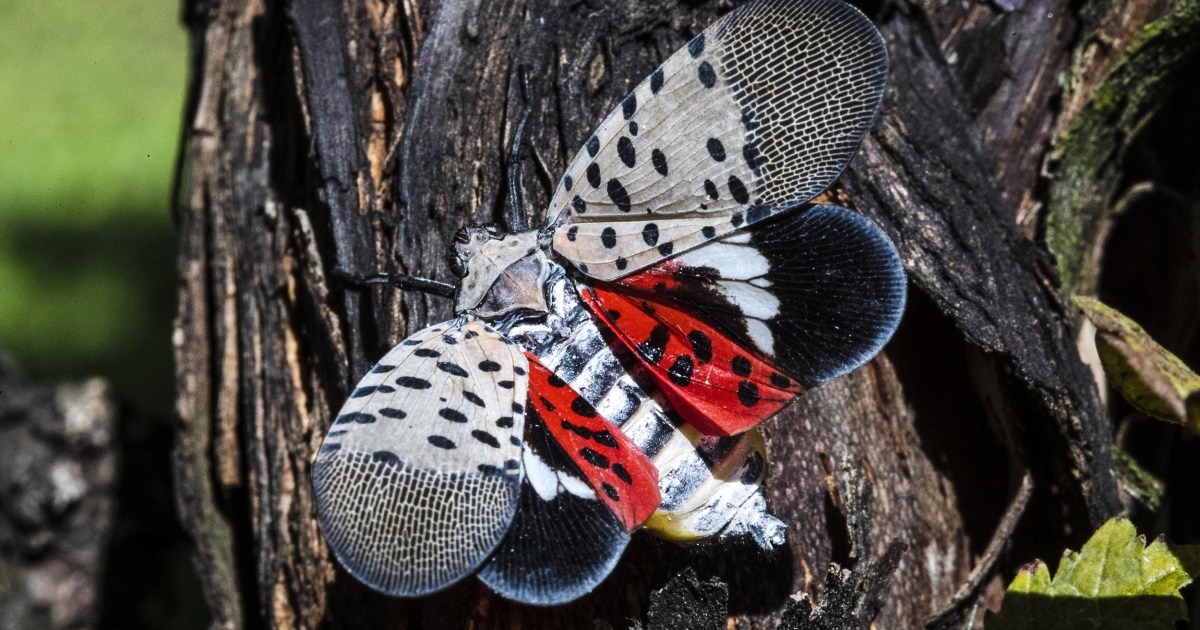
They’re spreading. From a single county in Pennsylvania, they’ve now been sighted in more than a dozen states. A colony was just found in Massachusetts, and a Staten Island family found hundreds of them in their yard. Unchecked, they could colonize every state between Maine and Kansas.
Wherever you see them, the guiding principle should be to shoot first and ask questions later. You don’t need anything fancy. Just step on them.
I’m not talking about alien monsters in a direct-to-video horror film. I’m talking about an innocuous-looking, pretty insect called the spotted lanternfly. Articles about it bear headlines like “Die, Beautiful Spotted Lanternfly, Die,” and “There’s a beautiful spotted insect flying across the U.S. — and officials want you to kill it.” No one is standing up for these small, colorful bugs. And that’s a good thing.
Normally, authorities do their best to keep wildlife and people safe. They remind people to watch out for deer, to help turtles cross country roads and to not become the person on the news that is attacked by an elk while trying to take a selfie with it. “Kill ’em all” is not the usual attitude of park rangers toward wild animals. But spotted lanternflies are not just any wild animals; they’re an invasive species.
If a species is transported to a new ecosystem where it finds a source of food but no predators, it can quickly spread — often decimating whatever it eats, displacing native competitors and disrupting that ecosystem. When a species does this, it is called an invasive species.
Even in their home terrain, spotted lanternflies are a plant vampire of sorts. They feed on phloem, a type of plant tissue that transports the sugars made in photosynthesis from the leaves to other parts of the plant. Spotted lanternflies are native to China, and their preferred phloem is from a plant also native to that country — the tree-of-heaven, itself also an invasive species present in the United States.
One invasive species eating another invasive species seems like a convenient solution. Unfortunately, spotted lanternflies feed on not just tree-of-heaven but all sorts of agricultural crops, from almonds to willows. They also excrete honeydew as they feed, which can not only lead to the growth of sooty mold but attract flies and stinging insects, which can become an issue if they are feeding on plants next to your front porch.
Invasive species usually spread with the help of an accomplice: humans. It isn’t exactly known how the lanternflies arrived, but it’s possible that in 2012 some lanternflies laid eggs on a shipment of stone bound for the United States. Humans may also be responsible for the spread of spotted lanternflies within the United States. Notwithstanding their name, spotted lanternflies are actually planthoppers that make for weak flyers. They are, however, capable of taking free rides on our forms of transport.
Tree-of-heaven, on the other hand, was intentionally introduced to the United States as a shade tree in the late 18th century without awareness of the danger it posed and now disrupts other flora in a majority of states.
In Pennsylvania alone, spotted lanternfly damage causes economic losses of $50.1 million each year and 484 jobs from destroyed crops. And if they continue to spread, a worst-case scenario for the state puts their economic cost at more than half a billion dollars annually with almost 5,000 jobs lost. With the sighting in Massachusetts at the end of September, infestations have now been found in 11 states. And they have a potential range that includes not only the mid-Atlantic but much of the Midwest and California.
Wherever you see them, the guiding principle should be to shoot first and ask questions later. You don’t need anything fancy. Just step on them. If they keep jumping away, you can hold an empty bottle above them, and they’ll jump into the bottle. Cap it and place the bottle in the freezer, and those spotted lanternflies will be no more. (Just give the other people who use your freezer a heads up about the bug-filled bottle.) It can also be a good idea to alert your local Department of Natural Resources or equivalent about your sighting.
For those who prefer a more gamified experience, consider participating in a “squishathon,” one of which occurred in Staten Island this year, or using an insect-killing salt gun or similar tool for bug hunting. It’s also important to keep an eye out for their egg masses, which can be seen on trees from October to June, and to learn how to remove them.
Sadly, lanternflies are far from the only invasive species in the United States, but that means there are many different ways you can join the fight against them. Head into the great outdoors (or even your own backyard) and take aim at wild boars and green iguanas. Cast a line and reel in invasive fish like snakeheads and Asian carp. Grab pruning shears and gloves to remove invasive plants like kudzu and garlic mustard. And when you’re out and about, take care that you don’t accidentally bring any invasive species with you on your car or boat and unwittingly become an express courier. Wherever you live, there are invasive species waiting to be squished, picked, caught or shot.
Source: | This article originally belongs to Nbcnews.com










